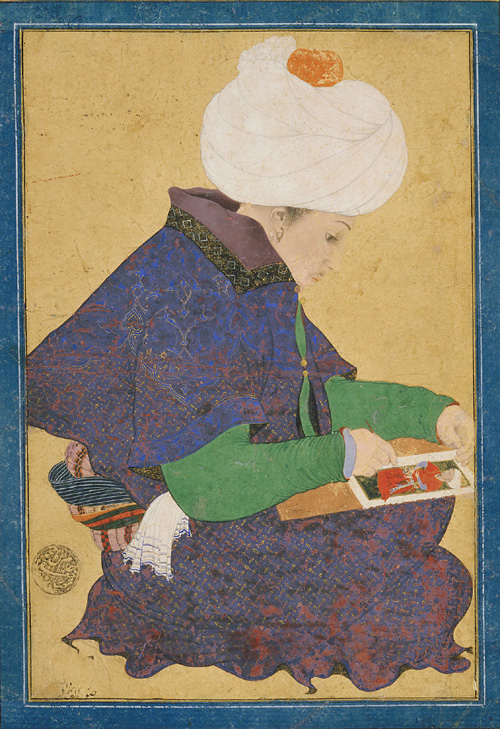 |
| A painter from the court of Mehmet II. |
| Picture from Wikipedia. |
There are many ways in which My Name Is Red is a beautiful book. I will not try to discuss most of them, because this isn't the place and I don't have the words. But it was Orhan Pamuk's discussion of painting and blindness that pierced and wove itself into the cloth of allusions in my mind. Embarrassingly, several months ago I already started and didn't finish a blog post on blind painters.
For the Ottoman and Persian miniaturists who hunched close to their work in dim candlelight, vision loss and eventual blindness was a universal fear. The painters of the Herat school learned to overcome this fear, according to Pamuk, through their philosophy of painting, believing that "the illuminator draws not what he sees, but what Allah sees" and that blindness is a gift from Allah which allows the artist to see these perfect archetypes unsullied by the imperfect objects of the real world.
As such, a blind miniaturist was in a similar position to a deaf Beethoven: their art consisted of arranging stereotyped elements on a page in a novel and pleasing way, of composition, in one sense and the other. Indeed, just as the composer doesn't always play or conduct his own music, so the miniaturist might leave the rendering of certain details to apprentices. But since the archetypes that he draws are preserved in muscle memory, he can often also do it himself.
Driving this analogy onto more tenuous ground, Western artists are more like rock stars, whose sounds are their property: if anyone else performs them, they can at best be a cover. Though I imagine rock stars go deaf with some frequency (a quick Google search seems to confirm this) I doubt many of them would consider playing music without hearing it. (If they do, this would be a great topic for a blog post by someone who isn't me.) This post is about today's blind painters, who paint by themselves and as themselves; about how and why.
